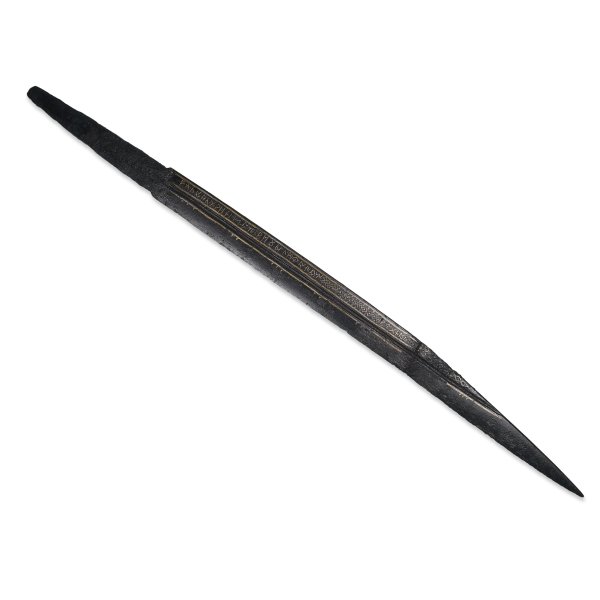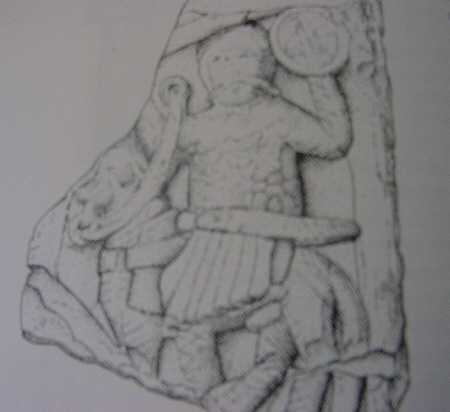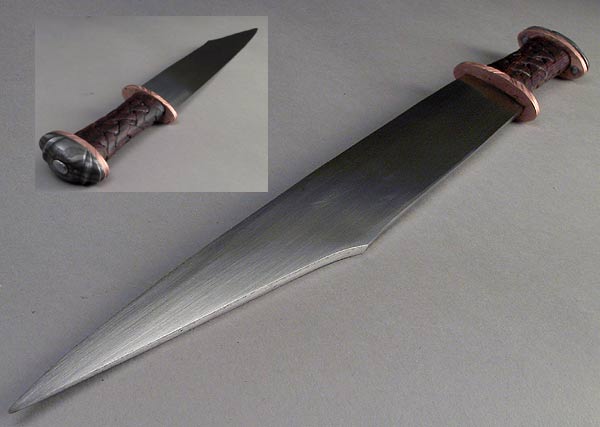Posts: 1,757 Location: Storvreta, Sweden
Sun 15 Feb, 2004 11:47 pm
Great thread!
A few things I like to add...
The
seaxes or single edged swords or war knives we´ve seen example of in this thread span quite some time period. The Hjortspring find is dated to around 350 BC and the Alnglo saxon seax the thread started with is from the 8th C AD (if I remember correclty)
Grip construction is typically a knife handle of organic material that is secured by riveting the tang at the protruding end or perhaps more common: by press fit and glueing.
Sometimes you see a small pommel or rivet cap at the end of the grip, but that seems not to have been the most common solution.
The wide and thin weapons with offset tang we´ve seen pohotos of in this thread belong to another group of seaxes that seem to have much in common with weapons like the Kopis, the Falcata and a later offspring: the turkish Yataghan.
They are generally wide and impressive in the blade but quite thin (typically some ?5 mm? at the base of the spine) and makes you think of a short sword when you handle them. Some are more like big kitchen knives, slim and wicked, but perhaps not so effective as cleaving weapons, more like murderous carving knives.
There are also those really big seaxes that have blades like Falchions of medieval times, or like very sturdy machetes. These usually have common knife handles: it is rare to find any remains of metal mounts in the hilts.
In Norway they developed during the viking age into proper swords (having sword hilts) and we recognize them as the single edged viking sword.
In general, the seaxes (with knife grps that are press fit/glued on) that have more narrow blades have also a much thicker spine. The cross section is a substantial triangular wedge. 7-9 mm thick is not uncommon. Sometimes you will se a fuller, but this can in some cases be so narrow and shallow it will not reduce weight much. It seems fullers were usually decorative rather than functional. Incised lines or groves is very common on some types.
The "typical" seax usually imagined with its angled back and long sharp point is most common in the anglo saxon material. On the continent it seems a less angular profile was more common. The point is usually spear-point-shaped and often aligned along the central axis of the blade.
These weapons have a strong blade prescence without being too cumbersome either. Balance is managed bu the mass of the tang and the change in cross section in the blade. Bigger examples often have longer/stouter tangs (leaving room for two hands in some cases). The way these blades are fashioned makes me think of some kind of migration era wakisashi, only a bit stouter.
I have seen a few examples when a solid pommel has been added to function like the pommel of a sword. I´ve only seen these on the continental version, with the less angular outline. Outline and cross section follow that of the handle: egg shaped in section and parallel in outline.
In other cases there is a more decorative pommel, or rivet block, that is not too far removed in shape from late roman/early migration period spatha rivet blocks: proto three lobe forms. Sometimes with two styilzed animal heads on either side of a central little dome. These pommels are too light to have any effect in counterbalancing. They are just rivetblocks and usually sit of a thin plate that show the shape of the cross section of the grip: egg shaped.
Some of the seaxes excavated in Vendel/Valsgärde have quite a bit of the grips remaining. They are of wood and has decorative domed rivets set in patterns. This must have looked stuning as well as improving the gripping.
There are many exceptions to these features. These are just general impressions.
A quick drawing to outline grip/blade combinations of common types that have been discussed in this thread so far:
 Attachment: 51.09 KB
Attachment: 51.09 KB






